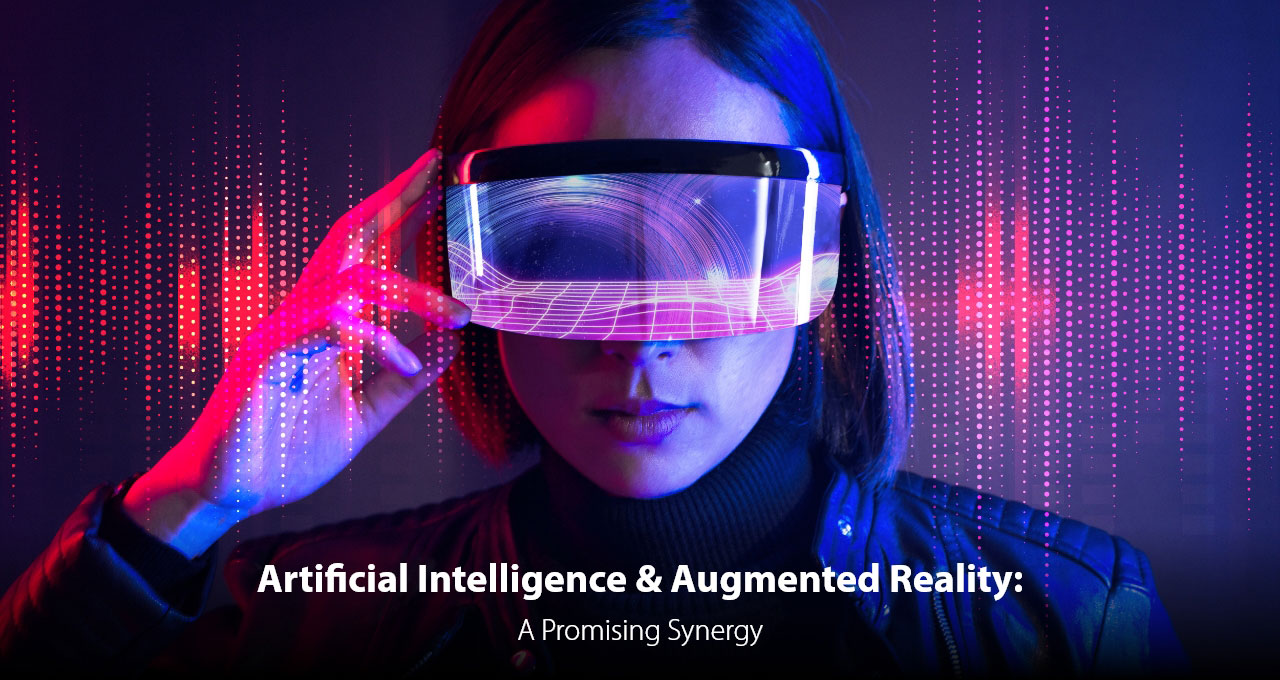
Image Credit: Image by rawpixel.com on Freepik
In today’s rapidly evolving technological landscape, two cutting-edge fields have emerged as game-changers: Artificial Intelligence (AI) and Augmented Reality (AR). Individually, these technologies have already made a significant impact on various industries. However, when combined, their potential becomes even more remarkable. In this blog, we will explore the role that Artificial Intelligence plays in Augmented Reality and delve into the exciting possibilities this synergy offers to businesses.
Understanding Augmented Reality
Before we dive into the integration of AI with AR, let’s first understand what Augmented Reality is. AR is a technology that overlays digital content onto the real world, enhancing our perception and interaction with our surroundings. Unlike Virtual Reality (VR), which creates an entirely immersive experience in a virtual environment, AR blends digital elements seamlessly with the physical world, providing users with real-time information and a new layer of interactivity.
Artificial Intelligence: Enhancing AR’s Potential
Artificial Intelligence serves as the backbone of AR by enriching and empowering the technology with intelligent capabilities. Through AI algorithms and machine learning techniques, AR applications can analyze vast amounts of data, understand the user’s context, and provide valuable insights in real-time.
Here are some key areas where AI enhances AR:
Object Recognition and Tracking
AI algorithms can analyze live video feeds captured by AR devices and accurately identify objects, people, and environments. By leveraging computer vision and deep learning techniques, AR applications can understand and track objects in real-time, leading to enhanced user experiences. For example, imagine an AR app that can identify different products in a retail store and provide users with detailed information, reviews, and even personalized recommendations.
Spatial Mapping and Navigation
AI algorithms can analyze and interpret the physical space around the user, creating detailed spatial maps. These maps enable AR applications to accurately place virtual objects in the real world and facilitate seamless interaction between the user and the virtual content. For instance, an AI-powered AR navigation system can guide users through complex indoor environments, such as airports or shopping malls, by overlaying directional arrows and information on their field of view.
Natural Language Processing
By incorporating natural language processing (NLP) capabilities, AR devices can understand and respond to user commands and queries. An AR headset that processes voice commands to perform actions like launching apps, providing directions, or retrieving real-time information. This integration of AI and AR not only simplifies user interaction but also enables hands-free and voice-controlled experiences.
Intelligent Content Generation
AI algorithms can generate dynamic and context-aware content in real-time, enhancing the AR experience. For instance, an AR application can analyze user preferences, behavior patterns, and location data to generate personalized content, such as targeted advertisements or customized product visualizations. This level of personalization can significantly impact marketing strategies and improve customer engagement.
Use Cases and Examples
The combination of AI and AR has already produced remarkable use cases across various industries. Here are a few examples:
Retail and E-commerce
AI-powered AR applications are transforming the retail and e-commerce landscape. For instance, companies like IKEA have developed AR apps that allow customers to virtually place furniture in their homes, enabling them to visualize how products would look before making a purchase. AI algorithms enable accurate object recognition, spatial mapping, and even room analysis, enhancing the overall shopping experience.
Healthcare and Medical Training
AR, when augmented with AI capabilities, offers immense potential in the healthcare sector. Surgeons can use AR headsets to overlay patient data, medical imaging, and real-time guidance during complex procedures. Additionally, AI algorithms can analyze medical images and provide valuable insights to healthcare professionals, aiding in faster and more accurate diagnosis.
Manufacturing and Maintenance
AR, powered by AI, is revolutionizing the manufacturing and maintenance processes. Technicians wearing AR headsets can receive real-time instructions and visual guidance, reducing errors and improving efficiency. By leveraging AI algorithms, AR applications can perform real-time object recognition, enabling technicians to identify faulty components or equipment, leading to streamlined maintenance operations.
Augmented Reality Platforms
Spark AR
Spark AR is a popular platform for creating AR effects on social media platforms like Facebook, and Instagram. It allows businesses to create engaging AR effects with unique features having the potential to reach billions of users worldwide. With Spark AR, companies can enhance their brand presence, create interactive campaigns, and engage with their target audience in unique and memorable ways.
Lens Studio
Lens Studio, developed by Snapchat, is another powerful platform for creating AR experiences. It provides tools and templates for building interactive AR lenses that users can apply to their photos and videos. Businesses can leverage Lens Studio to create branded lenses, promote products, and encourage user-generated content, fostering brand awareness and user engagement.
Mobile Apps
Developing dedicated mobile apps remains a popular choice for delivering augmented reality experiences. These apps can leverage the full potential of AR technologies and provide tailored experiences to users. For example, furniture retailers can develop AR apps that allow users to visualize furniture in their homes, enabling confident purchasing decisions.
Mobile Browsers
Augmented reality experiences can also be delivered through mobile browsers, thanks to the advancement of WebAR technologies. Users can access AR content by simply visiting a website, eliminating the need for app installations. This delivery method enables businesses to quickly reach a wide audience, allowing for greater scalability and convenience.
Wearable/Head Mounted Display (HMD)
These wearable devices combine high-resolution displays, sensors, and cameras to seamlessly blend virtual elements with the user’s surroundings. AR HMDs provide users with hands-free access to information, interactive gaming, and enhanced productivity, revolutionizing industries such as education, healthcare, and entertainment while unlocking a new realm of possibilities.
Conclusion
As we continue to explore the possibilities of merging Artificial Intelligence with Augmented Reality, businesses stand to gain significant advantages in terms of enhanced user experiences, improved efficiency, and better decision-making. The integration of AI algorithms enables AR applications to understand the user’s context, provide real-time insights, and generate personalized content, revolutionizing industries such as retail, healthcare, and manufacturing.
By leveraging AI and AR together, businesses can create innovative solutions, transform customer interactions, and gain a competitive edge. The synergy between these two technologies is a fascinating field that promises a future filled with limitless possibilities.
If you want to stay ahead in this rapidly evolving technological landscape, embracing AI and AR integration is essential. We invite you to explore the potential, and unlock new opportunities for your business.

